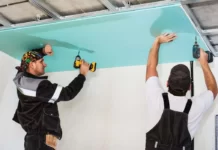When it comes to creativity and usability, homeowners are always thinking about rolled roofing vs shingles. While price isn’t a factor, learning about the advantages and disadvantages of these two options will help you make a decision faster before the next spill reminds you of the urgency of your situation.
However, it’s a new day in the roofing industry, and you’ll be asked to select between many options of roof shingles and rolled roofing, and we’re here to help you make that choice.
What is rolled Roofing?
A mineral-surfaced roofing material that comes in rolls is known as rolled roofing. MSR, sometimes known as rolled roofing (or roll roofing), comes in 100-square-foot rolls. Rolled roofing is inexpensive and readily available at most home improvement stores. It’s a tried and true method of roofing.
What are roof Shingles?
Roof shingles are interlocking pieces of material that make up a roof covering. These are generally flat, rectangular buildings with built-in courses from the bottom edge of the roof, with each successive course overlaying the joints below.
If you haven’t shopped for roof shingles in a while, you’re in for a treat because these days you’ll be presented with a wide range of options, each with its own set of advantages and disadvantages.
Rolled Roofing Vs Shingles
For residential properties, shingles are the most popular and preferred roofing material. Rolled roofing, on the other hand, has many of the same advantages. Both roofing materials are made up of a base mat and an asphalt layer with granules on top.
Despite the fact that both choices use a similar manufacturing method, there are a few significant distinctions. Rolled roofing comes in big rolls that are approximately 36 inches by 36 feet. These rolls are also made with thinner base materials and asphalt layers.
As shingles must be cut into small shapes and have thicker layers than rolled roofing, they cost more per square foot. Shingle installation also takes longer since the shingles must be individually positioned, which raises the cost of installation.
Rolled roofing is generally less expensive and easier to install. Shingles, on the other hand, provide a number of advantages. They do come in a greater range of shapes and colors, whereas rolled roofing is typically black, grey, or tan in hue.
Some in detail comparison pain points are:
1. Differences in Installation
Both materials can be put over an existing coating of asphalt shingles. Whether you’re installing rolls or shingles, an underlayment like rolled felt paper wet in asphalt is laid initially on a new roof.
Rolled roofing: Rolled roofing starts at the eave and progresses toward the peak of the roof, it is rolled horizontally onto the roof. It’s held in place with nails or staples, and the fasteners are hidden beneath the roll of cloth above it. Depending on the roof slope, the runs or MSR are overlapped by at least 12″ during installation. On the reverse of the roll, an asphalt sealing strip connects to the layer above it.
Roof shingles: Shingles are placed one by one, beginning at the eaves. The majority of the time, three or four nails are required. If you use more nails and/or roofing adhesive, certain manufacturers will give you a better wind warranty. Asphalt sealing strips are also included with shingles. For weather protection, each row or course of shingles overlaps the one below it by roughly 50%.
2. Cost Comparison
MSR roofing is less expensive than shingles. It’s been dubbed “cheap” by some. Underlayment, roofing rolls, and fasteners will cost $1.65 to $3.15 per square foot to install. Labor accounts for over 70% of the cost, so if you can do it yourself, you’ll save a lot of money. Shingle roofing costs two to three times as much as roll asphalt roofing, ranging from $2.75 to $5.35 per square foot. In most operations, material costs range from $1.50 to $2.25 per square foot, with wage costs ranging from $2 to $3 per square foot. Prices for that size roof are:
Roll roofing: $1,815 to $3,450
Shingle roofing: $3,025 to $5,885
3. Lifespan
The application of rolled roofing is limited due to its short lifespan. On occupied structures, such as the main residence on a residential lot, it is rarely used. Rolling roofing, on the other hand, is a low-cost roofing option for uninhabited structures such as sheds, garages, and other low-pitch structures.
Finally, for empty structures, rolled roofing is the most cost-effective solution. The rolls are low-cost and simple to install. Shingles, on the other hand, have a three to four times longer lifespan and more design options than rolled roofing, making them the best choice for roofing your primary residence.
4. Durability & Climate
For both, the climate is a crucial element in their long-term viability. In sunny, hot, and dry conditions, rolled roofing and shingles have a short lifespan. When asphalt dries out, it becomes brittle and more susceptible to impact and wind damage. Metal roofing is a preferable choice for roofs in harsh regions. In milder areas with fewer days of sun, both styles of roofing perform well.
5. Environmental Impact
Both are made of oil-based components, therefore their construction is not environmentally friendly. Shingles and rolled roofing can be recycled, however, this is not done very often. Most roofing companies aren’t interested in transporting them to a recycling facility because there aren’t many.
When we’ve contacted asphalt roofing recyclers, we’ve found that they’re frequently overburdened with debris, which builds up. The dirty little truth is that much of the material they can’t recycle eventually winds up in a landfill.
Conclusion
It’s quite straightforward. If you’re looking for a low-cost roof, rolled asphalt roofing is the way to go. Asphalt shingles are the way to choose if you want a roof that looks good and lasts a long time but it comes down to your own preference, budget, and the reason why you want to do it.














